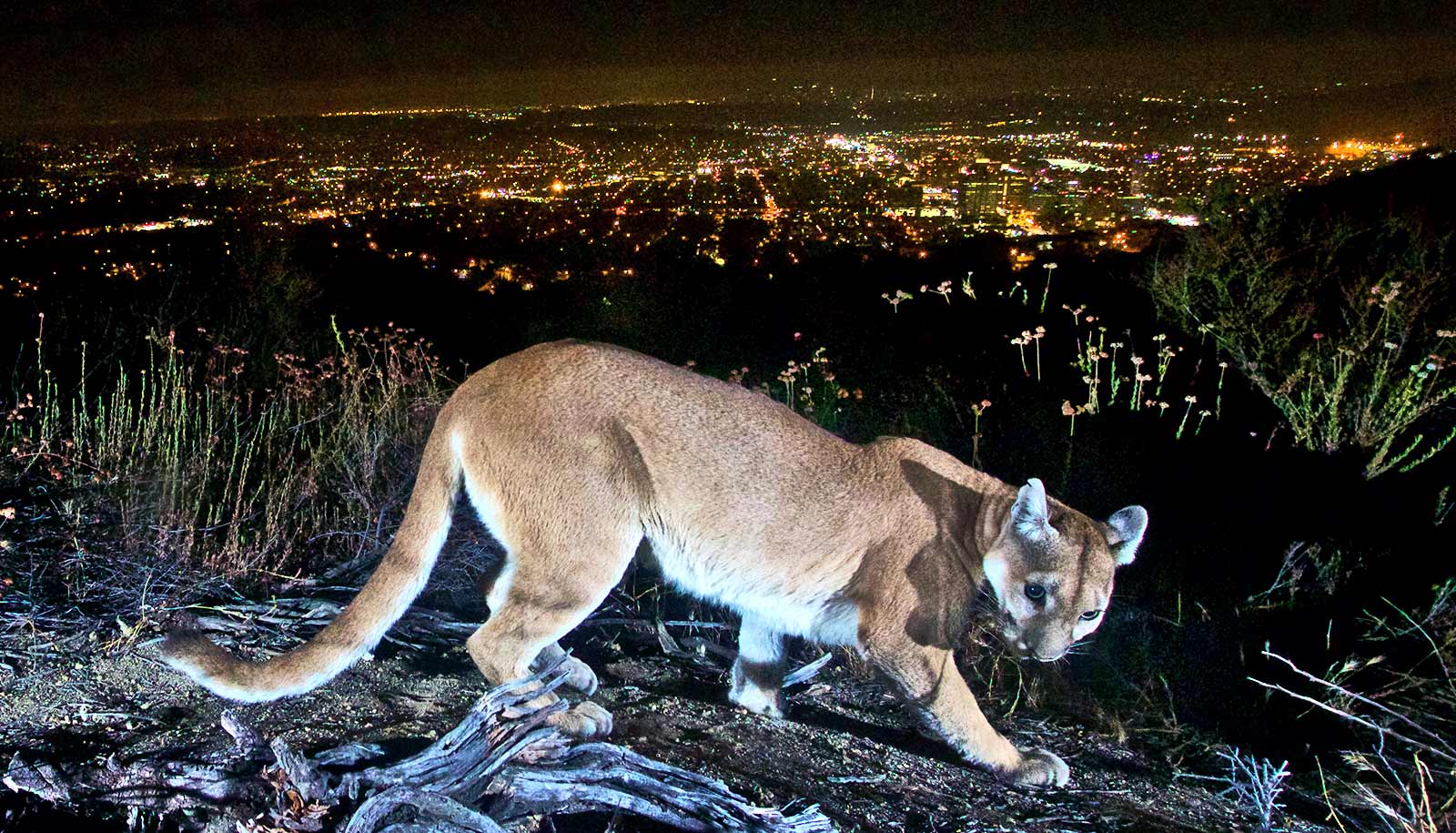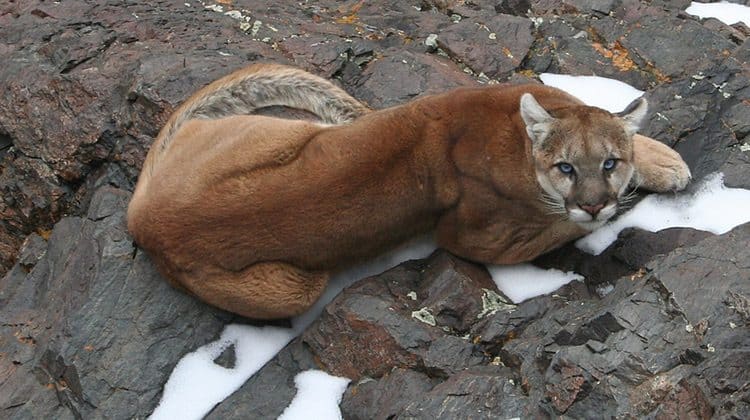


The prospect of increasing mountain lion populations in Oklahoma causes a feeling of alarm for some folks. On average, a typical adult lion kills and consumes about one deer per week. They feed on deer and other medium-sized and large mammals. Mountain lions are generally nocturnal and are active near dawn and dusk. The size of the home range is typically 50 to 75 square miles for females and 90 to several hundred square miles for males. Mountain lions prefer dense cover or rocky, rugged terrain, generally in areas of low human habitation, or regions of dense swamps. There has never been a black mountain lion documented anywhere in their range. Melanistic refers to the unusual black coloration produced by a hereditary, genetic mutation. A black panther is a melanistic version of a large cat, usually an African leopard or a jaguar. Though a popular myth, black panthers do not exist in the wild in North America. Males average seven feet long (from nose to the tip of its tail) and weigh around 140 pounds, while females average six feet in length with a body weight around 95 pounds. Its tail is more than half the length of the body, it has black tips on the tail and ears, and is primarily tan in color. The mountain lion can be identified by several distinguishing characteristics. Has there been a confirmed sighting of mountain lions in Oklahoma? Is that what I think it is? The nearest populations are in Texas, Colorado, New Mexico, Wyoming and South Dakota. Also, frequent mountain lion road-kills turn up, of all ages and of both sexes.īiologists in Arkansas and Missouri have reached the same conclusion as we have after years of searching: They have documented wandering individuals, but no evidence yet of viable populations. In the areas of every documented population in the U.S., biologists are able to locate numerous tracks, prey kills, scrapes (made when lions scent-mark their territories), and photos, which are often available from the many motion-detecting game cameras that hunters use to monitor trails. Missing from Oklahoma is the physical evidence that is left by a viable, breeding population of mountain lions. With some sightings, there just isn’t enough physical evidence (hair, scat, tracks, photos, etc.) to confirm or deny a mountain lion was there. Bobcats and house cats-along with coyotes, foxes, deer and even rabbits-have also been mistaken for mountain lions. Dog tracks and dogs themselves are the number one and number two cases of misidentification. What about the hundreds of others? Some turned out to be different animals. Although hundreds of recorded sightings have been reported, less than 30 have yielded enough physical evidence to clearly confirm the presence of a mountain lion. As compelling as a reported sighting may be, we must gather hard evidence before we can say, “yes, we have a confirmed mountain lion sighting.”Įach year the Wildlife Department investigates dozens of these reports. Furthermore the agency has no plans to do so.īecause mountain lions are reclusive animals, it's hard to know exactly when and where they are present. ODWC has never stocked, relocated or released any mountain lions in the state of Oklahoma. One thing is certain, despite many rumors and claims to the contrary.

In 1957, the Oklahoma Department of Wildlife Conservation listed the mountain lion as a game species with a closed season. Further reports continued into September of 1984, where the refuge manager observed a mountain lion on the Wichita Mountains Wildlife Refuge. Accounts continued into 1953 when an Oklahoma State University mammalogist documented tracks of a mountain lion southeast of Canton Lake in northwest Oklahoma. Sightings and evidence of cougars have been documented back to 1852, where two cougars were killed in southwest Oklahoma. People also killed almost all of the deer, the mountain lions’ primary food source. As the countryside was settled and developed, the large predators were shot. Once there were lionsĪlthough mountain lions, sometimes called cougars, pumas, panthers, painters, or catamounts, were common in Oklahoma and elsewhere in the Plains prior to European settlement, they were eradicated during the 19th century. But we have far fewer than rumors would lead you to believe. “Do we have mountain lions here or not?” The short answer is yes, sometimes. The mountain lion is one of Oklahoma's most elusive and discussed wildlife species.


 0 kommentar(er)
0 kommentar(er)
